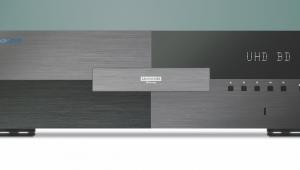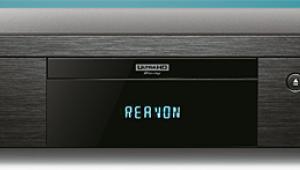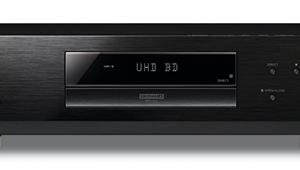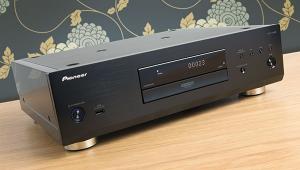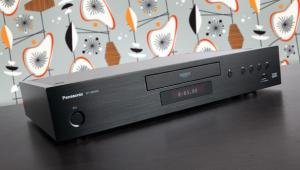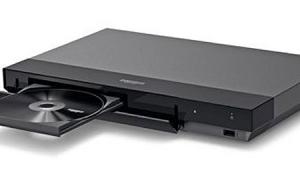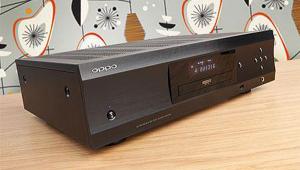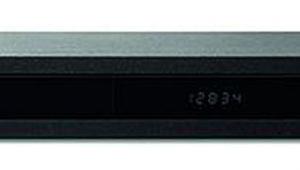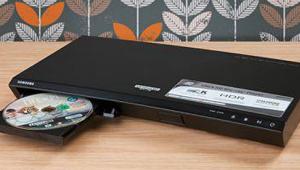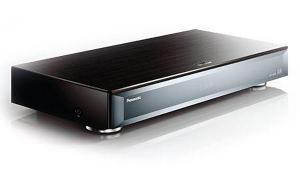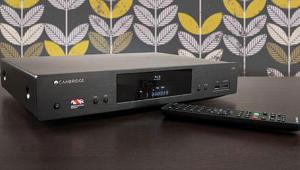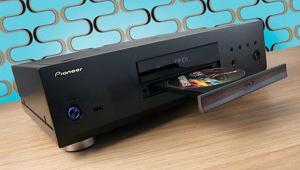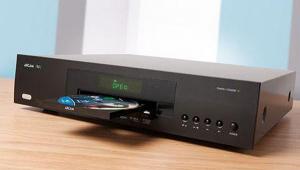Oppo BDP-103D review

 The Blu-ray player industry has reached a bit of a standstill. While we wait for a new 4K-enabled standard to surface, there doesn't seem much to be done in the way of improving upon current players. An indication of this is Sony and Panasonic's decision to continue the range-topping decks from 2012 into 2013. Tweaks to BD spinners in the last year have invariably been either linked to Smart features and media streaming, or audiophile upgrades designed to get the most from music material. With the BDP-103D, however, Oppo has done something a little different – it's integrated Darbee Visual Presence technology.
The Blu-ray player industry has reached a bit of a standstill. While we wait for a new 4K-enabled standard to surface, there doesn't seem much to be done in the way of improving upon current players. An indication of this is Sony and Panasonic's decision to continue the range-topping decks from 2012 into 2013. Tweaks to BD spinners in the last year have invariably been either linked to Smart features and media streaming, or audiophile upgrades designed to get the most from music material. With the BDP-103D, however, Oppo has done something a little different – it's integrated Darbee Visual Presence technology.
For those who don't know what that means, a quick explanation. Darbee is a US firm that likes to say things such as 'Buy our products – your eyes will thank you!' It manufactures the Darblet, an HDMI-equipped little box that sits between your BD player and your display. It's a video processor, only it eschews normal processing parameters – brightness, contrast, noise reduction, deinterlacing modes or colour balance – and focuses solely on the 'Darbee effect'.
This uses real-time analysis of incoming video, and subsequent adjustment, to give images more pop – or 'visual presence', if you will. How it does this is all terribly technical. Darbee itself says it 'embeds stereoscopic depth cues and details into an image by modulating the local pixel luminance using our underlying patented method.' That's as much as you need to know.
The BDP-103D is essentially Oppo's superb BDP-103EU, only with an extra trick up its sleeve and an additional £100 on the asking price. Seeing as the Darbee Darblet retails for around £200, and comes in a curiously downmarket box, it's beginning to look like a bargain already. As long as you're interested in what Darbee can do.
Doppelganger disc-spinnerAesthetically, the new Oppo is nearly identical to its non-Darbee stablemate. This means you get a full-width, solidly-built deck with a neat fascia. The only difference is the Darbee logo on the front.
Connectivity and features are the same, too – and they're rather impressive. There are three USB inputs (one to be used with the bundled Wi-Fi dongle), twin HDMI outputs, and even twin HDMI inputs should you want to use the Oppo as a pre-amp/switcher.
The player will stream audio and video files from DLNA devices, upscale content to 4K, spin 3D BDs and accept Super Audio CDs and DVD-Audio platters. It's a fully-featured deck, in other words, with beautiful construction and a slick user interface courtesy of dual-core processing. See our review of the BDP-103EU right here for more on what it can do.
The only drawback to the BDP-103D is also the same as its predecessor – the Smart cupboard is a little bare. While mass-market brands pack all manner of catchup/streaming services, Oppo's highlights are BBC iPlayer, Netflix and YouTube. And, annoyingly, the home menu features icons for Vudu, Pandora and Film Fresh – services unavailable in the UK.
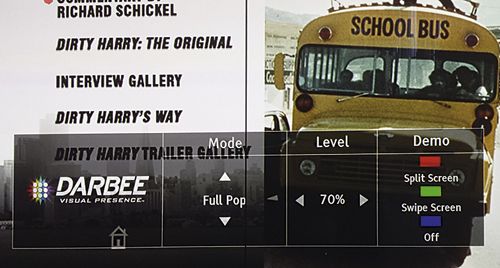
As for the Darbee effect, it certainly works, although consideration of how much you utilise it, and with exactly what sources, should be taken.
It offers three modes, named Gaming, Hi-Def and Full Pop. I found the latter two to be the most suitable, as Gaming proved rather aggressive.
The Darbee menu overlays on your screen when you hit the dedicated button on the handset. Here you can choose the mode, the level of its impact (from 0-120 per cent) and even view the pre- and post-processed images in split-screen. The latter is very useful to see exactly what's occurring. Note that the Oppo needs to be set to 1080p output for the Darbee suite to work.
With a BD copy of The Cabin in the Woods and the Hi-Def effect set to maximum, the shift in image quality was immediately noticeable, though not exactly pleasant. At this level, detail levels appeared too sharp, with an overly contrasted feeling and exaggerated noise. Dial it down to around 50/60per cent, though, and Darbee Visual Presence shows its benefits, with a subtle improvement in the picture's sense of depth, while character's faces and background details have a little more definition.
This is 1080p native material, of course, and some will prefer to leave it unfettered. SD sources are perhaps a better fit for the Oppo's software. Switching to Dirty Harry on DVD, I found that, again, sticking to no higher than around 60 per cent yielded the most agreeable results; Clint Eastwood's loose-cannon cop strode around San Francisco with more, well, presence, seemingly lifted out of backgrounds.
Essentially, anyone thinking of buying an Oppo BDP-103EU should definitely check out this upgrade. That extra £100 gets you a neat toy to play with.
Specification
3D: Yes
Upscaling: Yes. To 4K using Qdeo processor
Multiregion: No. Region B BD/R2 DVD
HDMI: Yes. 2 x v1.4 outputs (with ARC); 2 x v1.4 inputs (one front-mounted)
Component: No
Multichannel analogue: Yes. 7.1
Digital audio: Yes. Coaxial and optical inputs
Ethernet: Yes
Built in Wi-Fi: No, but a USB Wi-Fi dongle is supplied
SACD/DVD-A: Yes/Yes
Dolby TrueHD/DTS-HD decoding: Yes
Dolby TrueHD/DTS-HD bitstream: Yes
Dimensions: 430(w) x 79(h) x 311(d)mm
Weight: 4.9kg
Features: Wi-Fi via supplied adaptor; 3 x USB inputs; front-mounted MHL-ready HDMI input; media playback via USB and home network; Marvell Qdeo processor; Android App for remote control; USB extension lead supplied; picture parameter tweaks; 2D-3D conversion depth adjustment; YouTube, Picasa and Netflix channels; Roku Ready; Source Direct mode; rigid chassis construction; Gracenote support; external IR input; RS232 port; dual-core SoC; Darbee Visual Presence
 |
Home Cinema Choice #351 is on sale now, featuring: Samsung S95D flagship OLED TV; Ascendo loudspeakers; Pioneer VSA-LX805 AV receiver; UST projector roundup; 2024’s summer movies; Conan 4K; and more
|

